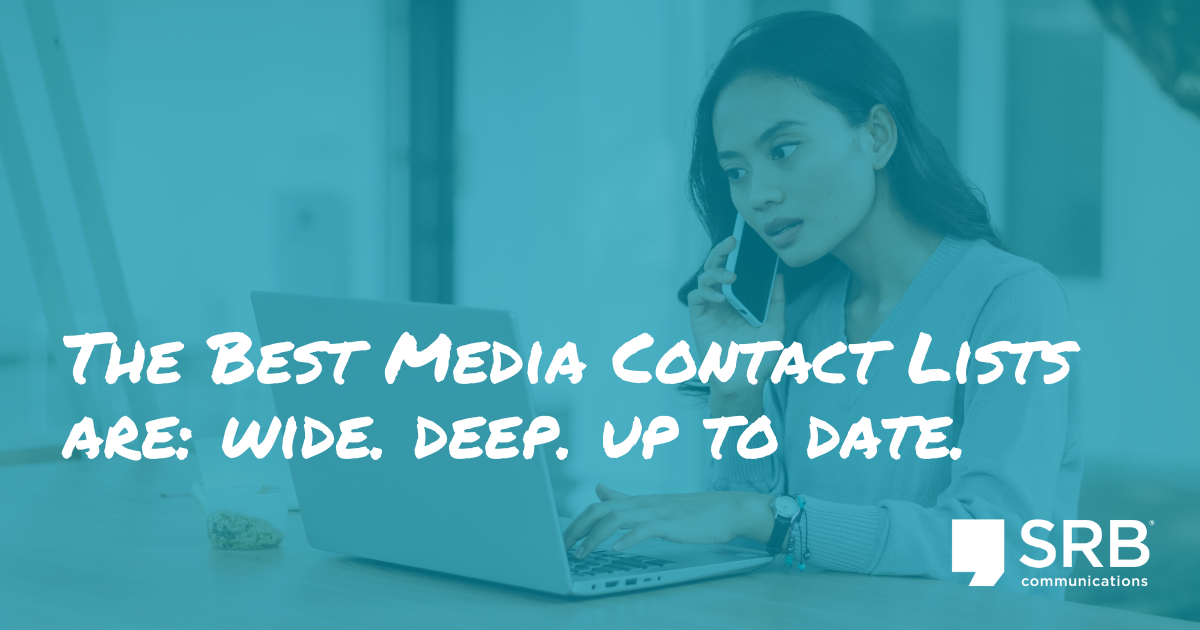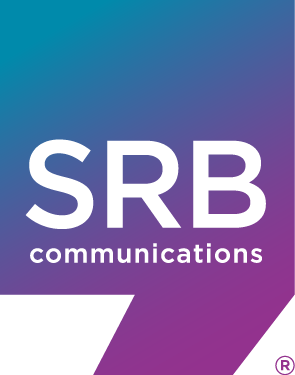News & Insights
The Best Media Contact Lists Are: Wide. Deep. Up To Date.

Smart communications advice is every PR pro’s stock-in-trade. Deep, rich media contact lists are their treasure. At SRB, our relationships power effective public relations as much as our agency’s nearly 40 years of experience. Who you know is as vital as what you know to deliver results in this business. But here’s what some people forget: Useful media contact lists involve a lot of work. Creating one is just the beginning. Like starting a new exercise regimen, maintenance is required. Media lists must be carefully curated, regularly updated and continually enhanced with additional information to remain valuable.
Build media contact lists, then relationships
Most importantly, creating media contact lists is only Step 1 on the way to cultivating those all-important relationships with people in media. Getting to know beat reporters, editors, producers and program hosts – becoming familiar with their work, what they cover and how they prefer to be contacted – pays off when a PR agency has something to pitch. Emails are more likely to get read, phone calls returned and, we’ve found, a client’s press release picked up.
Here are some suggestions to increase the value of media-contact lists:
- What information should go into a media contact list? These are essential: The outlet’s name, contact name, beat reporters, assignment editors and what they cover, email addresses and a direct or indirect phone number. Nice to have: A reporter or publication’s latest stories involving clients or subjects of interest to clients.
- How should they be organized? Keep contacts in a customer relations management (CRM) system or a spreadsheet and make contacts sortable several ways. Perhaps by name of outlet, type of outlet (broadcast, print, digital), subject (for instance: local news, business, politics/policy, society, sports) and geographic region of coverage (local, regional, national, international).
- How often should they be updated? Frequent updates are a must. If you only update your list when you use it, you’re making a mistake. Journalists change beats, jobs and employers all the time. Even employers add and drop beats, sections and focus areas with alacrity in pursuit of audiences’ ever-shifting interests.
- We must keep up. Fortunately, there are database services to help monitor media and identify the best media contacts to receive a client’s news release. Cision, Muck Rack and Meltwater are three examples. Each offers their subscribers a large database of media contacts that can be used to create a targeted list for story pitches. They also provide analytics that measure effectiveness, such as how many outlets used a client’s release and which ones were most influential. Subscriptions cost thousands of dollars a year.
SRB subscribes to Meltwater. Say we want to identify food reporters to cover a planned event in Washington, D.C. Using Meltwater’s Media Relations search tool, we type in our subject (food and beverage), our location (Washington, D.C.), geographic focus (we choose national) and media channels (blog, consumer magazine, newspaper, television). Fifty-eight names come up.
Clicking on a name opens a popup that shows a writer’s beats, latest stories for a 14, 30 or 90-day period and another link to a more complete profile that shows how many times they’ve written about someone or something recently. There’s also an X (formerly Twitter) profile that reveals how many followers they have, how many X posters they’re following and how many times they’ve posted.
Our agency could then start to build a custom list by reviewing each of those 58 names to choose the most suitable ones to receive the forthcoming release. Or start a new search with different parameters if we don’t like the choices we saw.
SRB doesn’t use X – and some journalists don’t use X either – but we suggest it’s still one source for gathering intelligence about either a journalist or a media outlet.
Don’t just create a list, curate it
Good media contact lists are more about quality than quantity. We want to find the outlets and reporters we think will be most likely to pick up our client’s story. If this is our first experience with food industry writers and media outlets, it’s in our client’s interest and our own to check them out more. Make sure the contact information from Meltwater is still accurate even though it is quite recent. Read stories by reporters who stood out in our Meltwater research. Double-check that our preferred outlets are still doing business as usual and not in the process of shutting down, laying off staff or being sold.
That brings us to another consideration. PR professionals should hold their skepticism close with traditional media in sharp decline and artificial intelligence in rapid ascent. More than ever, we need to vet media contacts and who they work for.
The Wall Street Journal reported recently that spammers are creating AI content that’s so good it can fool Google’s algorithms and land at the top of search results (“Beware the Top Google Search Result. It Might be Wrong,” February 18, 2024). The WSJ reporter’s Google search returned a top result in large, highlighted text that led her to a LinkedIn article by an Adobe content manager named Morgan Mitchell with 150 bylined articles. After more digging, reporter Nicole Nguyen discovered that the Adobe manager didn’t exist.
In a similar vein, PR agencies whose clients depend on them for solid recommendations might also want to take a close look at any publications or websites whose names are unfamiliar before adding them to a media list. Some may be fringe outlets with normal-sounding names that trumpet extreme political views, conspiracy theories and pseudo-science stories – a potential embarrassment for corporate clients.
How to check? Look up the names on one of these three news bias-rating websites: AllSides, Ad Fontes Media and Media Bias/Fact Check.
There’s an adage in journalism that goes, “If your mother says she loves you, check it out.” It’s good advice for public relations professionals to remember, too.



